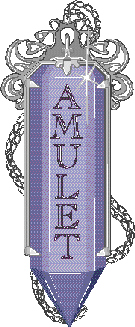
Creating User Interface Software
ARPA funded-research project in the
Human Computer Interaction Institute
School of Computer Science
Carnegie Mellon University
Amulet is primarily funded by:
DARPA,
sponsored by NCCOSC under Contract No.
N66001-94-C-6037, Arpa Order No. B326. This is part of DARPA's
Human Computer Interaction (HCI) Program.
Principal Investigator:
Brad Myers
PhD Students:
Rich McDaniel and
Rob Miller
Undergraduate Student: Andrew Faulring
Visiting professor from Osaka University: Yoshihiro Tsujino
(Previous project members, and picture)
Project Summary
Amulet is a user interface development environment for C++ and is
portable across X11, Microsoft Windows 95 and NT, and the Macintosh.
Amulet helps you create graphical,
interactive user interfaces for your software. More than just another
free virtual toolkit, Amulet includes many features specifically
designed to make the creation of highly-interactive, graphical, direct
manipulation user interfaces significantly easier, including a
prototype-instance object model, constraints, high-level input
handling including automatic undo, and a full set of widgets.
1995-1996 Accomplishments
In the past year, we have been working on a number of interesting
extensions of Amulet.
Version 2.0
was released, which provides support for gesture recognition including an
example-based interactive editor for gestures, a hierarchical
command-object model
which supports selective undoing and repeating of operations, a
high-level
interactive inspector
for debugging programs, and command objects and
widgets for the insides of applications including support for selection
handles and cut/copy/paste.
In addition, we worked on a number of exciting projects for future releases.
An
animation facility
has been added to Amulet that allows the programmer to
declare that any slot should be animated, and then it will smoothly change
from its old to its new value whenever the slot is set.
The
Silk interactive sketching tool
allows professional graphic designers to
sketch early interfaces designs with a pen on a computer tablet, and
the system recognizes widgets and will allow them to be operated while still
sketchy, and converted into the real widgets when complete. This year,
we added a "storyboard" feature to Silk to allow the behavior of the interface
to be demonstrated.
The
Gamut interactive tool to create programs by demonstration
was started this year. Gamut will allow many types of games, simulations, and
educational software to be created entirely by demonstration.
We also started an
Amulet interface to the ModSAF tactical map database.
This is intended to be a front-end to the
Exercise Editor from the
Soar/IFOR project at the University of Michigan, and
it allows waypoints and paths to be created quickly using gestures.
Future Plans
A primary goal for the 1997 fiscal year (1996-1997) is to add interactive
tools to Amulet. We plan
to add an interface builder, like Visual Basic, and to complete the Gamut and
Silk tools.
We will also be working on finishing and releasing the Animation Support,
completing the ModSAF interface and map-based Exercise Editor, adding very
small light-weight objects so Amulet can support the thousands of objects
needed by many types of visualizations, and adding an interface from Amulet to
the world-wide web.
Back to the Amulet Home Page.
Maintained by: Brad Myers. Last modified 11-Jul-96
